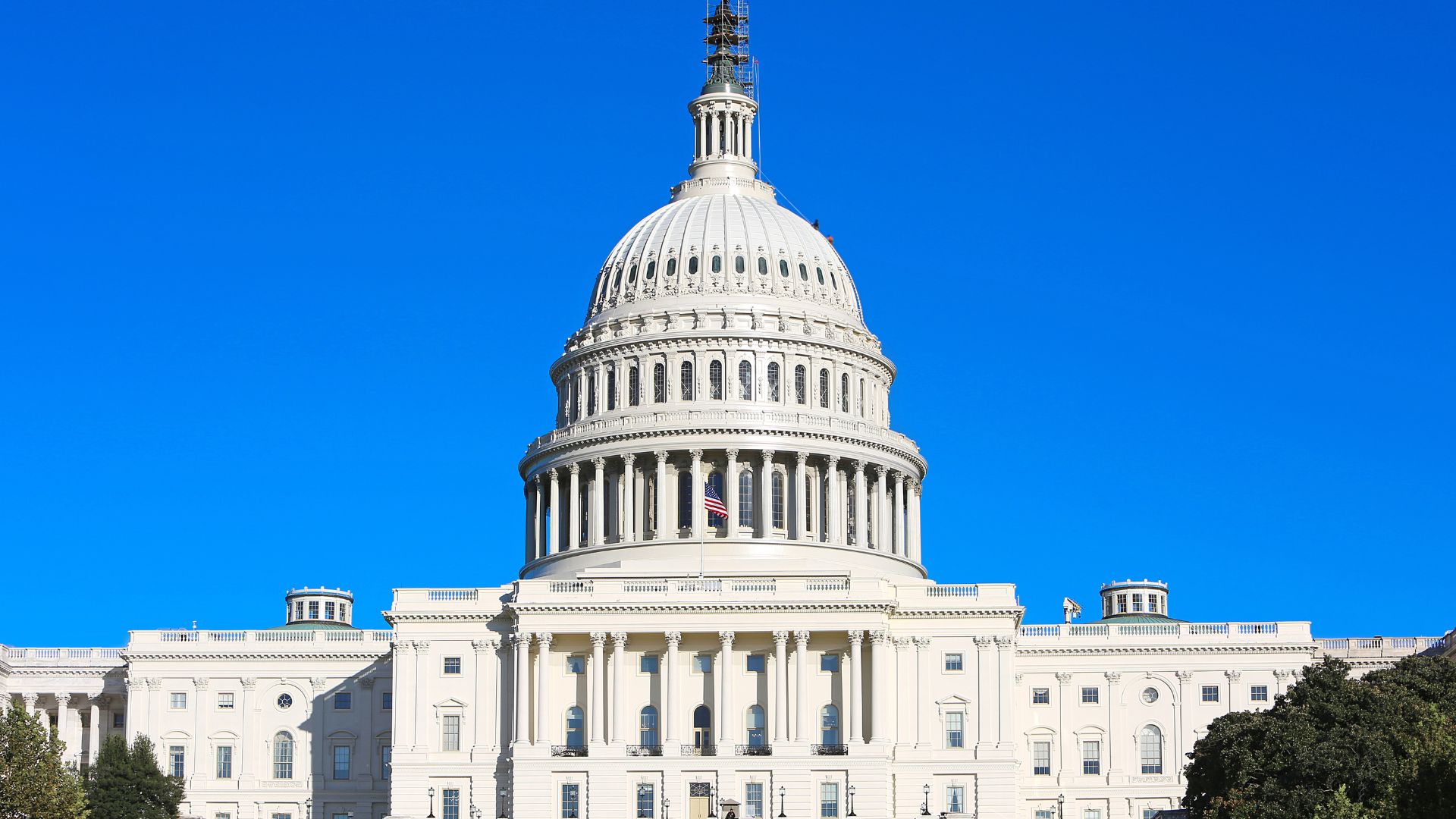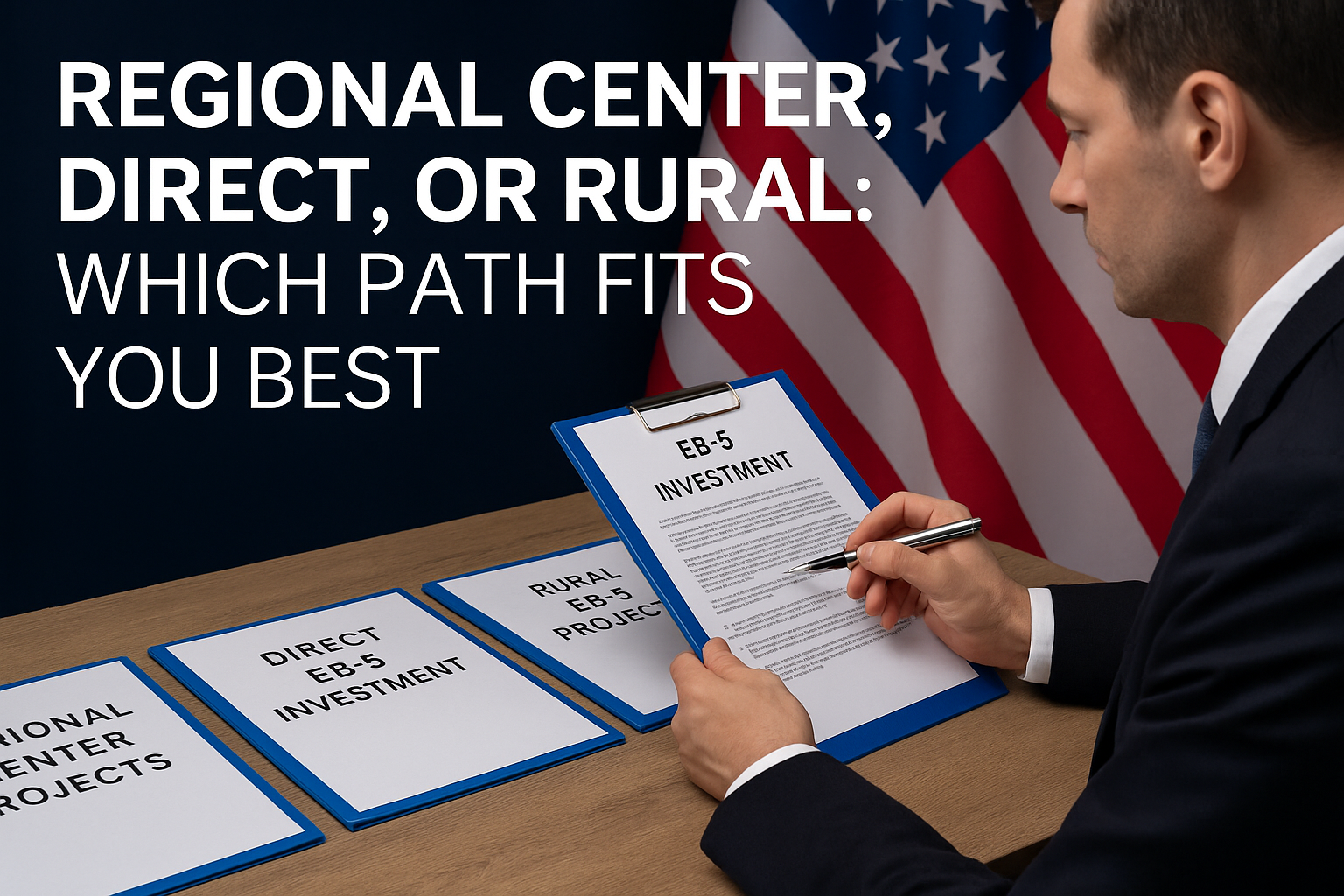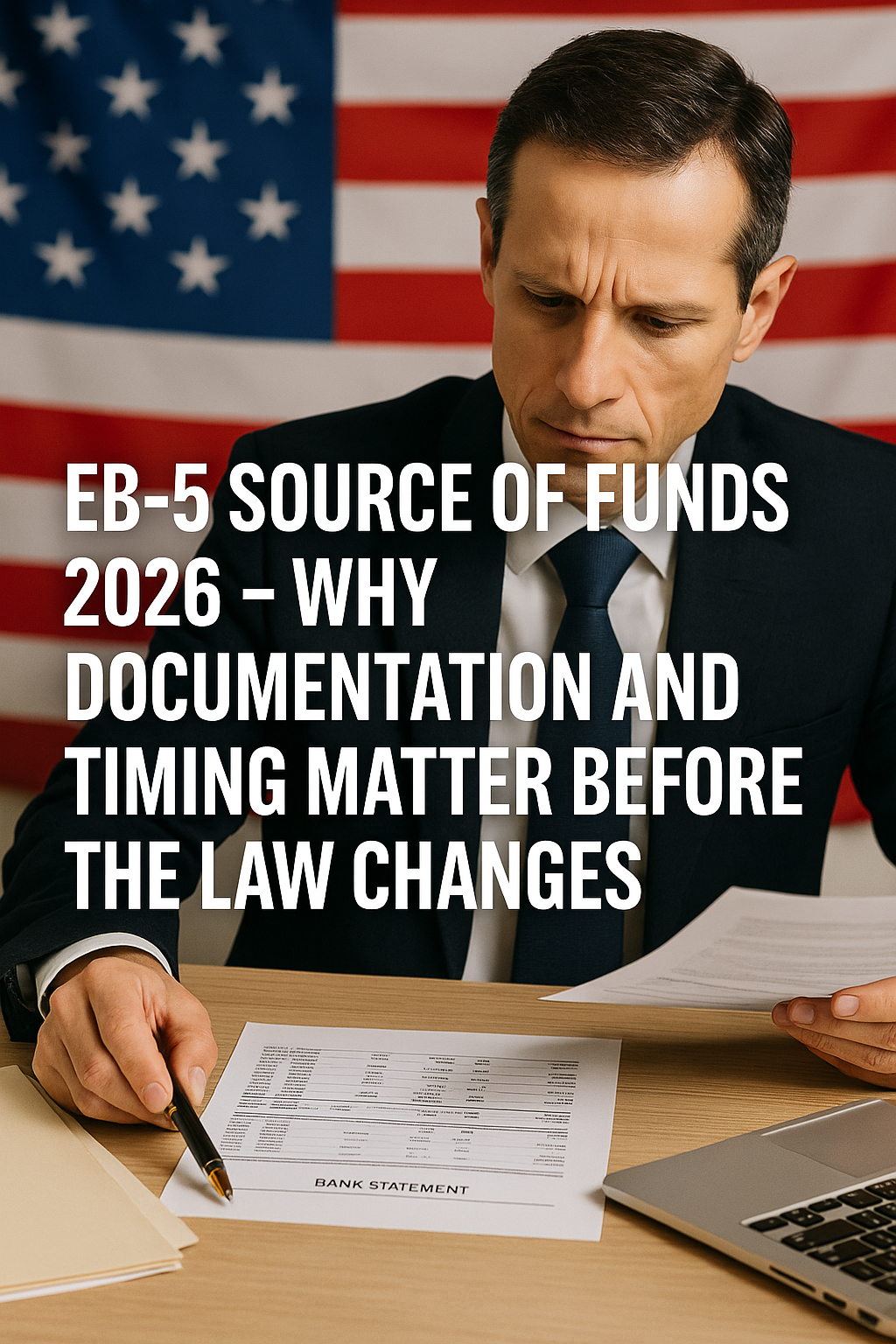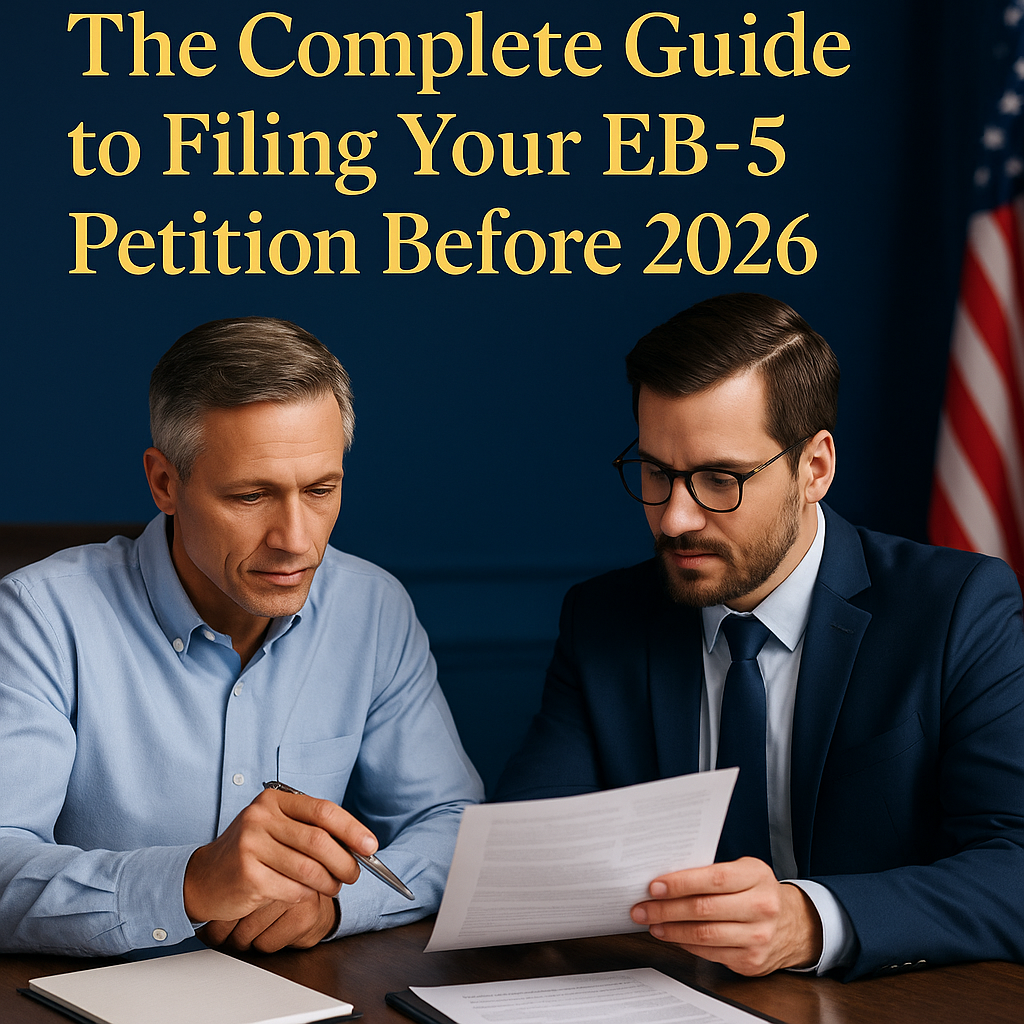In EB-5 immigration, success is determined as much by documentation as by investment.
The Source of Funds (SOF) requirement lies at the heart of every petition, serving as the proof that an investor’s capital was earned lawfully and transferred transparently.
Even the strongest project or perfect investment amount cannot succeed without a credible SOF file.
As the current EB-5 Reform and Integrity Act of 2022 remains valid only until September 30th, 2026, investors should not delay the one task that most often determines approval, preparing and verifying their Source of Funds.
Why the Source of Funds Is So Critical
USCIS adjudicators must confirm that every dollar used in an EB-5 investment was obtained legally. This process ensures compliance with U.S. anti-money-laundering standards and protects the integrity of the program.
A clear and well-structured SOF submission demonstrates the investor’s credibility and reduces the likelihood of scrutiny or delay.
When documentation is inconsistent or incomplete, the case becomes vulnerable. Most Requests for Evidence (RFEs) and denials today are not due to project risk but to unclear financial trails, missing bank links, unverified transfers, or unexplained assets.
What USCIS Expects to See
A compliant SOF file must tell a complete financial story:
where the capital originated, how it accumulated, and how it reached the EB-5 project.
Typical documentation includes:
- Tax returns, audited accounts, or payslips showing lawful income.
- Purchase or sale agreements for assets such as property or shares.
- Bank statements tracing transfers step by step.
- Loan agreements and collateral records, when borrowing is involved.
- Gift or inheritance deeds, accompanied by the donor’s proof of funds.
Each document should form part of a continuous and logical sequence with no missing links between origin and transfer.
How to Prepare an Effective SOF File
- Start early. Gathering, translating, and authenticating documents across jurisdictions can take months.
- Work with professionals. Engage an immigration attorney and, when needed, a financial analyst or CPA familiar with U.S. evidentiary standards.
- Maintain consistency. Figures, account names, and transaction dates must align across all documents.
- Translate properly. Every non-English record must be translated and certified.
- Retain digital records. Clear, organized PDFs speed legal review and prevent data loss.
Professional Tip: Treat your SOF like a financial audit. The easier it is to follow, the faster it is approved.
Pros and Cons: Self-Preparation vs. Professional Support
| Approach | Advantages | Drawbacks |
| Self-Prepared File | Lower cost; the investor has full control of the records. | Higher risk of omissions, inconsistent translations, and formatting errors. |
| Attorney-Guided File | Ensures compliance with USCIS standards; avoids delays. | Requires coordination and professional fees. |
| Team-Prepared (Attorney + Accountant + Bank) | Most efficient; produces a well-verified and defensible package. | Slightly longer lead time but best approval outcomes. |
For most investors, professional preparation delivers measurable benefits. A modest upfront cost often prevents costly re-filing or rejection later.
Key Advantages of Early Preparation
- Reduced processing risk. A complete SOF avoids RFEs and speeds adjudication.
- Lower stress during filing. Investors can focus on project selection instead of document recovery.
- Compliance under current law. Filing before 2026 locks your case into the present EB-5 framework, even if future rules tighten documentation requirements.
Common Pitfalls and How to Avoid Them
- Mixing personal and business funds without clear separation.
- Using unverified third-party loans or cash transfers.
- Failing to document foreign exchange or remittance channels.
- Submitting inconsistent income figures across tax and bank records.
Each of these errors signals risk to adjudicators. They are avoidable through early planning and professional review.
Why This Matters Before 2026
Timing has always been the defining advantage in the EB-5 program.
Every renewal cycle has introduced new rules, higher thresholds, or temporary suspensions, and history suggests that the same may occur once again after September 30, 2026.
When the EB-5 Reform and Integrity Act of 2022 expires, Congress will review the program for reauthorization. That process almost always brings adjustments to reflect inflation, economic policy, or political priorities.
The last increase, in 2019, raised the minimum investment by 80 percent overnight. Similar recalibrations could occur in 2026, pushing the TEA level from $800,000 to $900,000 or more, and the non-TEA level above $1.2 million.
Beyond the numbers, the next iteration of the law may tighten compliance and due diligence. Potential reforms could require:
- Expanded proof of tax payment in both the investor’s home country and the United States.
- Enhanced anti-money-laundering (AML) documentation, especially for investors transferring funds from jurisdictions with limited financial transparency.
- Additional verification of banking intermediaries and remittance channels, extending review timelines.
- Stricter audits of Regional Centers and project developers, increasing documentation demands from investors.
These measures would improve oversight but inevitably add cost, complexity, and time to each case.
Filing under the current EB-5 Law 2026 allows investors to secure a position within the most predictable regulatory environment the program has offered in years. The existing framework is already proven, accepted by adjudicators, and supported by a growing body of precedent approvals.
In contrast, waiting until after the 2026 sunset invites uncertainty, not only about investment amounts but also about what new evidentiary standards may emerge. For families planning immigration within the next two years, filing now is both a financial and strategic decision.
Simply put: the rules we know today are stable, transparent, and attainable.
The ones that come after 2026 may not be.
Conclusion
A strong Source of Funds file transforms uncertainty into confidence.
It reflects transparency, discipline, and respect for U.S. law, qualities that USCIS rewards with approval.
Investors who start early, document carefully, and file before the 2026 deadline will benefit most from the current stable regulatory environment.
In EB-5, clarity is not just a legal requirement; it is the foundation of trust.
Part of The EB-5 Countdown Series 2026
This article is part of The Immigration Magazine’s exclusive editorial series:
“The Final Window — Secure Your U.S. Green Card Before the Law Changes.”
Next Article → Regional Center, Direct, or Rural — Which Path Fits You Best?
Subscribe to The Immigration Magazine newsletter to receive the full series EB-5 2026 Guide and expert insights before the program’s renewal date on September 30th, 2026.
The EB-5 Countdown Series 2026 | An Exclusive Editorial by The Immigration Magazine













